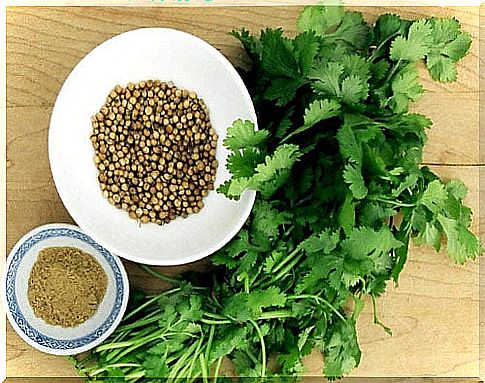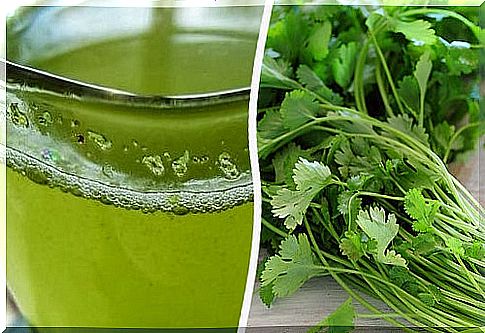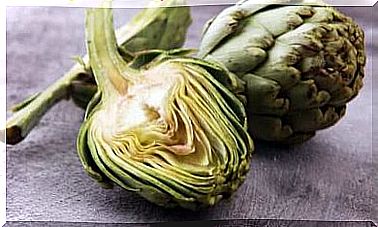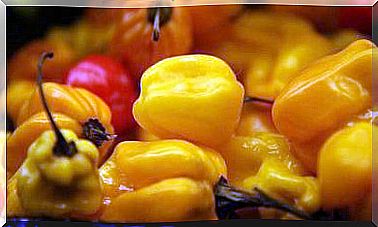Discover All The Amazing Properties Of Coriander!

Coriander, also called cilantro and pebre, is a plant belonging to the group of aromatic herbs, due to its intense, pleasant and appetizing smell. So far, its place of origin has not been specified, but evidence has been found to indicate that it was possibly used in antiquity for religious purposes (as offerings) and gastronomic (as a curative and preservative). Furthermore, according to research carried out by the Universidad Juárez del Estado de Durango, in Mexico, it plays an important hepatoprotective role, through which its health benefits are demonstrated.
Today, its cultivation has spread to almost all parts of the world and this has further promoted its use. Especially in the kitchen. In fact, in countries like Venezuela, coriander has become an important ingredient in many recipes and is therefore essential.
Since it has a mild flavor, which is incorporated very well with other ingredients, as well as having a pleasant aroma, it is mainly added in two ways: as a base or as a final complement. In the latter case, it is usually added fresh, in small amounts, and also serves a decorative purpose. Especially in purees, rice and various meats.
The best use of coriander
To make the most of this plant’s nutrients, it’s best to use it when it’s fresh. It is not convenient to cook it because heat eliminates all its properties. And if it freezes or dries, coriander will lose its aroma and die.
Once a fresh coriander bouquet is purchased, it should be kept in the refrigerator, in an airtight container, to try to keep it in good condition for as long as possible. Obviously, the faster it is consumed, the better. Withered coriander is not good.

the most used part
Coriander leaves are the most used part of this plant, but it is certainly not the only one. In most cases, seeds are used, which fulfill a great antioxidant function, when ripe and dry, as a flavoring seasoning, or better, to intensify the flavor of other foods. This way you get a much more noticeable taste on the palate and, above all, pleasant.
In short, coriander is a very useful plant and that includes its use:
- As a flavoring for chocolates.
- To give taste to certain treats.
- In various salads, such as beetroot, kale and spinach.
- In sauces, preserves, marinades, soups and stews (mainly pasta and rice).
- It is also included in certain bakery and pastry products, although these foods are not recommended.
- In typical dishes from around the world, such as meat balls (typical Moroccan food).
- As an ingredient for liqueurs such as: Cointreau and Benedictine .
- In combination with cumin, it becomes a preservative and flavoring for certain types of sausages, sausages and salami.
- It can also be included in certain desserts and jams, mainly because it combines perfectly with fruits due to its acidic taste.
- As a flavoring for various meats, especially in pork and lamb recipes.
Types of cilantro used in gastronomy
1. Moroccan coriander
This is the easiest type to get. The seeds are brown, have a diameter of about 5 mm and can be ground easily (a fine powder is obtained).
2. indian coriander
The size is similar to the previous one, but what changes is the color. In this case, it is lighter or yellower. The flavor is milder. They are usually roasted before grinding to intensify their aroma.
Dried seeds, ground or whole, should be kept in a glass jar, away from light, insects and moisture . This way it can be kept in good condition for a longer time.

If you’ve decided to grow cilantro at home, congratulations! This plant, although it needs regular care, can be managed very easily in a pot or vegetable garden.
Just be sure to water it regularly and place it in a place where there is enough sun, without fear. According to a study by the University of Tarapacá in Chile, plants have learned to absorb only the light they need, bypassing dangerous ultraviolet rays. This confers great interest in developing new theories related to advances in climate change and sun protection.
Many people choose to have their cilantro in the kitchen, handy, so they can use it in their recipes often.
Gardeners and plant lovers point out that this is a plant that needs its soil to remain moist, but not too much. Therefore, irrigation should be moderate but constant. On the other hand, it may be convenient to change the soil annually (if it was planted in a pot).









